
Elsa Sullivan Lanchester was a British actress with a long career in theatre, film and television.

Fast, Cheap & Out of Control is a 1997 documentary film by filmmaker Errol Morris.

James Edmund Caan was an American actor. He came to prominence playing Sonny Corleone in The Godfather (1972) – a performance that earned him Academy Award and Golden Globe nominations for Best Supporting Actor. He reprised his role in The Godfather Part II (1974). He received a motion-picture star on the Hollywood Walk of Fame in 1978.
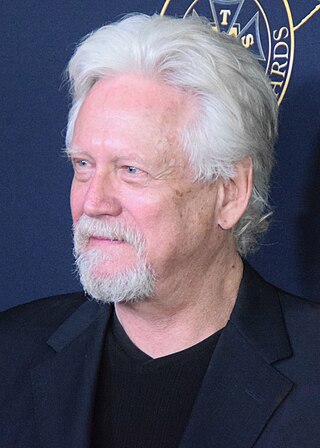
Bruce Allen Davison is an American actor, who has appeared in over 270 film, television and stage productions since his debut in 1968. His breakthrough role was as Willard Stiles in the 1971 cult horror film Willard. He was nominated for an Academy Award for Best Supporting Actor, and won a Golden Globe Award and an Independent Spirit Award, for his performance in Longtime Companion (1989).

The Muppets Take Manhattan is a 1984 American musical comedy-drama film directed by Frank Oz and the third theatrical film featuring the Muppets. The film stars Muppet performers Jim Henson, Oz, Dave Goelz, Steve Whitmire, Richard Hunt, Jerry Nelson, as well as special appearances by Art Carney, James Coco, Dabney Coleman, Gregory Hines, Linda Lavin and Joan Rivers. Filmed in New York City during the prior summer, it was released theatrically on July 13, 1984, by TriStar Pictures. A fantasy sequence in the film introduced the Muppet Babies, toddler versions of the lead Muppet characters.

Willard is a 2003 American psychological horror film written and directed by Glen Morgan and starring Crispin Glover, R. Lee Ermey and Laura Elena Harring. It is loosely based on the novel Ratman's Notebooks by Stephen Gilbert, as well as on the novel's first film adaptation, Willard (1971), and its sequel, Ben (1972). It was not billed as a remake by the producers, who chose instead to present it as a reworking of the themes from the original with a stronger focus on suspense.

Boogeyman is a 2005 supernatural horror film directed by Stephen Kay and starring Barry Watson, Emily Deschanel, Skye McCole Bartusiak, Tory Mussett, Charles Mesure, and Lucy Lawless. Written by Eric Kripke, Juliet Snowden, and Stiles White, from a story by Kripke, the film is a new take on the classic "boogeyman", or monster in the closet, who is the eponymous antagonist of the film. The plot concerns a young man, Tim Jensen, who must confront the childhood terror that has affected his life.
Gilbert Alexander Ralston was a British-American screenwriter, journalist and author. He was a television producer in the 1950s and a screenwriter in the 1960s. He created the television series The Wild Wild West and wrote scripts for Star Trek, Gunsmoke, Ben Casey, I Spy, Hawaii Five-O and Naked City. He wrote the screenplay for the 1971 movie Willard, which was based on the 1968 novel Ratman's Notebooks written by Stephen Gilbert.
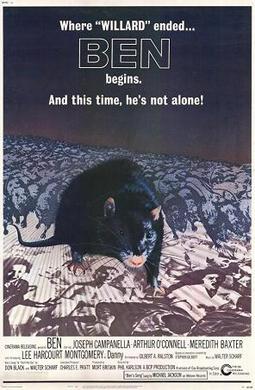
Ben is a 1972 American horror film directed by Phil Karlson and starring Lee Montgomery, Joseph Campanella, and Arthur O'Connell. It is a sequel to the film Willard (1971). The film follows a lonely boy named Danny Garrison who befriends Willard's former pet rat named Ben. Ben becomes the boy's best friend, protecting him from bullying and keeping his spirits up in the face of a heart condition. However, Ben forms an army of deadly rodents while the police attempt to control it.
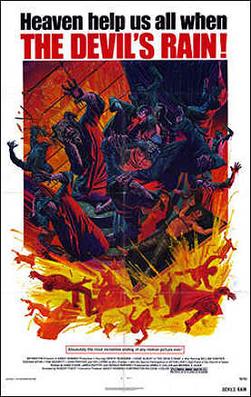
The Devil's Rain is a 1975 supernatural horror film directed by Robert Fuest. The ensemble cast includes William Shatner, Tom Skerritt, Ernest Borgnine, Eddie Albert, Ida Lupino and Keenan Wynn. John Travolta made his film debut in a minor role. During filming, Travolta converted to the Scientology religion after co-star Joan Prather gave him a copy of the book Dianetics written by Scientology founder L. Ron Hubbard. Satanist Anton LaVey is credited as the film's technical advisor and appeared in the film playing a minor role. Although it takes place in an unspecified part of the American Southwest, the movie was shot in Durango, Mexico.

Infinity is a 1996 American biographical film about the romantic life of physicist Richard Feynman. Feynman was played by Matthew Broderick, who also directed and co-produced the film. Broderick's mother, Patricia Broderick, wrote the screenplay, which was based on the books Surely You're Joking, Mr. Feynman! and What Do You Care What Other People Think?, both written by Feynman and Ralph Leighton. It is the only film Broderick has ever directed.

Return of the Fly is a 1959 American horror science-fiction film and sequel to The Fly (1958). It is the second installment in The Fly film series. It was released in 1959 as a double feature with The Alligator People. It was directed by Edward Bernds. Unlike the previous film, Return of the Fly was shot in black and white.
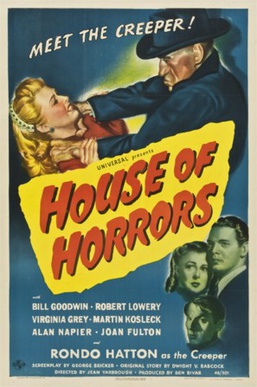
House of Horrors is a 1946 American horror film released by Universal Pictures, starring Rondo Hatton as a madman named "the Creeper".
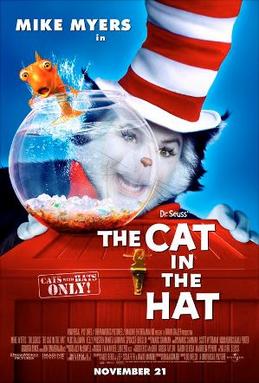
The Cat in the Hat is a 2003 American fantasy comedy film directed by Bo Welch in his directorial debut and written by Alec Berg, David Mandel and Jeff Schaffer. Loosely based on Dr. Seuss's 1957 book of the same name, it was the second and final live-action feature-length Dr. Seuss adaptation after How the Grinch Stole Christmas (2000). The film stars Mike Myers in the title role along with Alec Baldwin, Kelly Preston, Dakota Fanning, Spencer Breslin, Amy Hill and Sean Hayes in supporting roles.
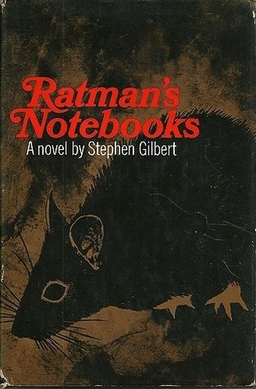
Ratman's Notebooks is a 1968 short novel by Stephen Gilbert. It features an unnamed social misfit who relates better to rats than to humans. It was the basis for the 1971 film Willard, its 1972 sequel Ben, and the 2003 remake of the original film. After the release of the original film, the book was re-released and re-titled Willard.

Fade to Black is a 1980 American psychological horror comedy film written and directed by Vernon Zimmerman, and starring Dennis Christopher, Eve Brent and Linda Kerridge. It also features Mickey Rourke and Peter Horton in minor roles. The plot follows a shy and lonely cinephile who embarks on a killing spree against his oppressors while impersonating classic film characters.

Portnoy's Complaint is a 1972 American comedy film written and directed by Ernest Lehman. His screenplay is based on the bestselling 1969 novel of the same name by Philip Roth. It was Lehman's first and only directorial effort.
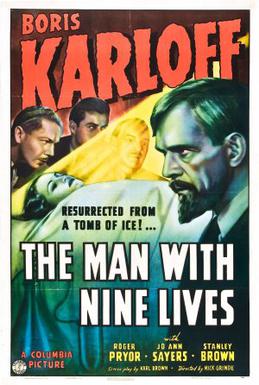
The Man with Nine Lives is a 1940 American horror science fiction film directed by Nick Grinde and starring Boris Karloff.

The Revengers is a 1972 Western film written by Wendell Mayes based upon a story by Steven W. Carabatsos. The film was directed by Daniel Mann and stars William Holden and Ernest Borgnine.
Stephen Gilbert was a Northern Irish novelist, businessman and nuclear disarmament activist. On the strength of his early novels in the 1940s, Gilbert was accounted by E. M. Forster as "a writer of distinction", but he is chiefly remembered as the author of Ratman's Notebooks (1968) which sold over 1 million copies and was twice made into a horror film named Willard in the United States.
















